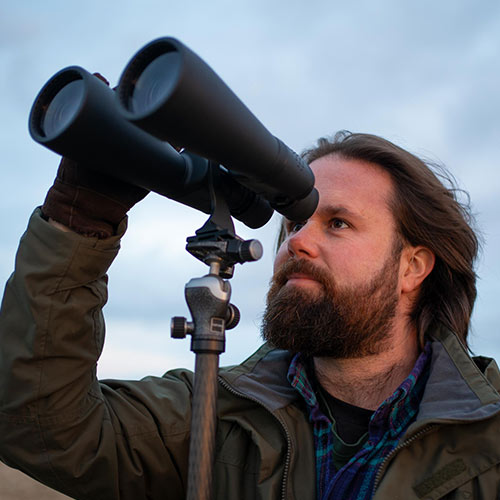Now Reading: Kingman Crash Revives UFO Mystique and Claims of Government Cover-Up
-
01
Kingman Crash Revives UFO Mystique and Claims of Government Cover-Up
Kingman Crash Revives UFO Mystique and Claims of Government Cover-Up


In the quiet backdrop of Kingman, Arizona, a narrative unfolds that has captivated both skeptics and believers alike—an air crash, shrouded in mystery, intrigue, and whispers of extraterrestrial encounters. The Kingman crash, said to have taken place in July 1953, has become a focal point for UFO enthusiasts and conspiracy theorists, spawning a high number of stories that intertwine reality and folklore. It is essential to delve into the context of this incident to comprehend its significance in the broader tapestry of UFO lore.
At the time of the crash, the socio-political landscape of America was undergoing remarkable changes. The Cold War was in its nascent stages, and the anxiety of the era was palpable, manifesting in a fervent interest in aerial phenomena. Reports of unidentified flying objects began surfacing, as the public’s imagination was ignited by the possibility of life beyond our planet. Against this backdrop, the Kingman incident slipped into the collective consciousness of UFO lore, intensifying with each passing year.
Witnesses who claimed to have seen the crash reported a bright flash followed by a concussive roar that shook the desert floor. The narrative became particularly compelling with the involvement of local teenagers, Jeff Young and Paul Chetham, who, after the crash, recounted their experiences to Arthur Stansel, a local who would eventually act as the gatekeeper of the story. Stansel became the primary source of the Kingman narrative, amplifying their accounts and intertwining them with his own burgeoning theories about extraterrestrial life.
As the tales surrounding Kingman evolved, so too did the supposed details of the crash. While surfacing claims suggested that the military swiftly arrived on the scene to retrieve the debris, often accompanied by ominous statements to keep witnesses silent, the lack of tangible evidence—such as physical wreckage or government documentation—has left the narrative ripe for skepticism. Several researchers have attempted to authenticate these events, yet each revelation seems to complicate rather than clarify the mystery. For example, investigations into military records reveal discrepancies, such as the absence of reported aerial incidents in the area around that time.
Among the various assertions, one persistent thread is the possibility of a cover-up—a theme recurring in UFO mythology. This notion resonates strongly with those who believe governmental forces operate under a veil of secrecy to conceal the existence of extraterrestrial life. Some theorists speculate that the military’s swift actions and the cryptic nature of the witnesses’ testimonies serve as evidence of a broader conspiracy to suppress knowledge of alien encounters.
However, in the pursuit of truth, it is essential to approach the Kingman crash narrative with a critical lens. While it captivates with its dramatic intrigue, the absence of credible evidence leads many to categorize it among the many hoaxes and urban legends that populate this realm. The Kingman crash, rather than firmly establishing itself as a validated event, has morphed into a mythos reflecting society’s fascination with the unknown and the potential existence of life beyond Earth.
As we explore the intricate layers of the narrative, we become aware of the human desire for connection—whether with each other or with the cosmos. The Kingman crash may not provide definitive proof of extraterrestrial visitation, but it serves as a reminder of the vastness of our universe and the deep-seated curiosity that drives us to seek answers among the stars. It’s this quest for knowledge that continues to fuel discussions and investigations into the realms of possibility that lie beyond our immediate comprehension.
As we turn our attention to the mystery letter that ties itself intricately to the Kingman crash, we navigate through a tapestry of uncertainty and human emotion. This letter, purportedly written by a soldier who witnessed the crash, has become a point of contention among researchers and enthusiasts alike. It’s within these types of narratives that the lines between fact and fiction become dangerously blurred, leading us on a quest not just for evidence, but for understanding the motivations behind such claims.
From what we know, Judie Woolcott emerged as a central figure in this narrative, claiming that her late husband, an Army officer, communicated with her about his involvement in the Kingman crash. However, as further investigations unfolded, inconsistencies arose regarding Woolcott’s connection to the events described in the letter. For instance, Kathryn Baez, Woolcott’s daughter, revealed that her stepfather, William Woolcott, who served in the Navy during the Vietnam War, had never been in Kingman at the time of the alleged crash. This raises an important question: what drives individuals to fabricate or embellish their connections to significant historical events?
The allure of the extraordinary can be a potent motivator. Many people yearn for a sense of significance in their lives, and being part of a story steeped in mystery and cosmic intrigue can provide that. The emotional weight of a narrative that intertwines love, loss, and the unknown resonates deeply. It is no wonder that myths and legends about extraordinary incidents capture the imagination. But when personal attachments complicate the truth, we must ask ourselves how much of this narrative is shaped by emotional investment rather than factual accuracy.
When investigating the origins of the mysterious letter, we stumble upon the deeper aspect of personal narratives intertwined with historical events. David Rudiak’s inquiry led him to speculate about a soldier named Charles Alan Roberts, who may have drafted the letter. While research confirmed that Roberts served in Vietnam and was tragically killed in action, discrepancies in his military records cast doubt on his potential involvement at Kingman. This juxtaposition reflects a common struggle in the context of UFO research: the distinction between documented facts and the myths that often grow around them.
Consider the implications of a letter left untold or hidden—what truths could it hold? If Woolcott indeed had an affair or close friendship with a soldier who was embroiled in the Kingman crash narrative, it further complicates the picture. The potential for romantic entanglements to distort recall and perpetuate myths can be profound. How often do we see such stories morphing into grand narratives, influenced by love, longing, or the scars of loss? The emotional truths can feel more profound than the physical evidence that might ground them in reality.
In the annals of UFO lore, the Kingman crash serves not merely as an isolated incident but as a microcosm of the human experience—of our desires, fears, and the eternal quest for meaning. The story continues to unfold, with each layer revealing not just the complexities of the narrative itself, but also the yearning for connection, whether it be with our own humanity or the potentially vast and unfathomable cosmos.
As discussions around the mystery letter persist, it’s important for researchers to remain discerning, weighing emotional narratives against facts. The Kingman crash and its enigmatic correspondences remind us that while we search for answers among the stars, the stories we tell about ourselves—and the truths we choose to believe—are as compelling as any flight through the cosmos. In the end, the true mystery may not lie in the crash itself but in the depths of human experience that it continues to evoke.
Stay Informed With the Latest & Most Important News
-
 012024 in Review: Highlights from NASA in Silicon Valley
012024 in Review: Highlights from NASA in Silicon Valley -
 02Panasonic Leica Summilux DG 15mm f/1.7 ASPH review
02Panasonic Leica Summilux DG 15mm f/1.7 ASPH review -
 03How New NASA, India Earth Satellite NISAR Will See Earth
03How New NASA, India Earth Satellite NISAR Will See Earth -
 04And Thus Begins A New Year For Life On Earth
04And Thus Begins A New Year For Life On Earth -
 05Astronomy Activation Ambassadors: A New Era
05Astronomy Activation Ambassadors: A New Era -
06SpaceX launch surge helps set new global launch record in 2024
-
 07Space Force plans new ‘Futures Command’ amid pressure to speed up modernization
07Space Force plans new ‘Futures Command’ amid pressure to speed up modernization




















